As a meat lover, you might have heard of veal, but have you ever wondered what it tastes like? Veal is a type of meat that comes from young calves, typically less than 20 weeks old.
It is a popular choice in French, Italian, and Mediterranean cuisines, but its taste and texture may differ from other meats you have tried before.
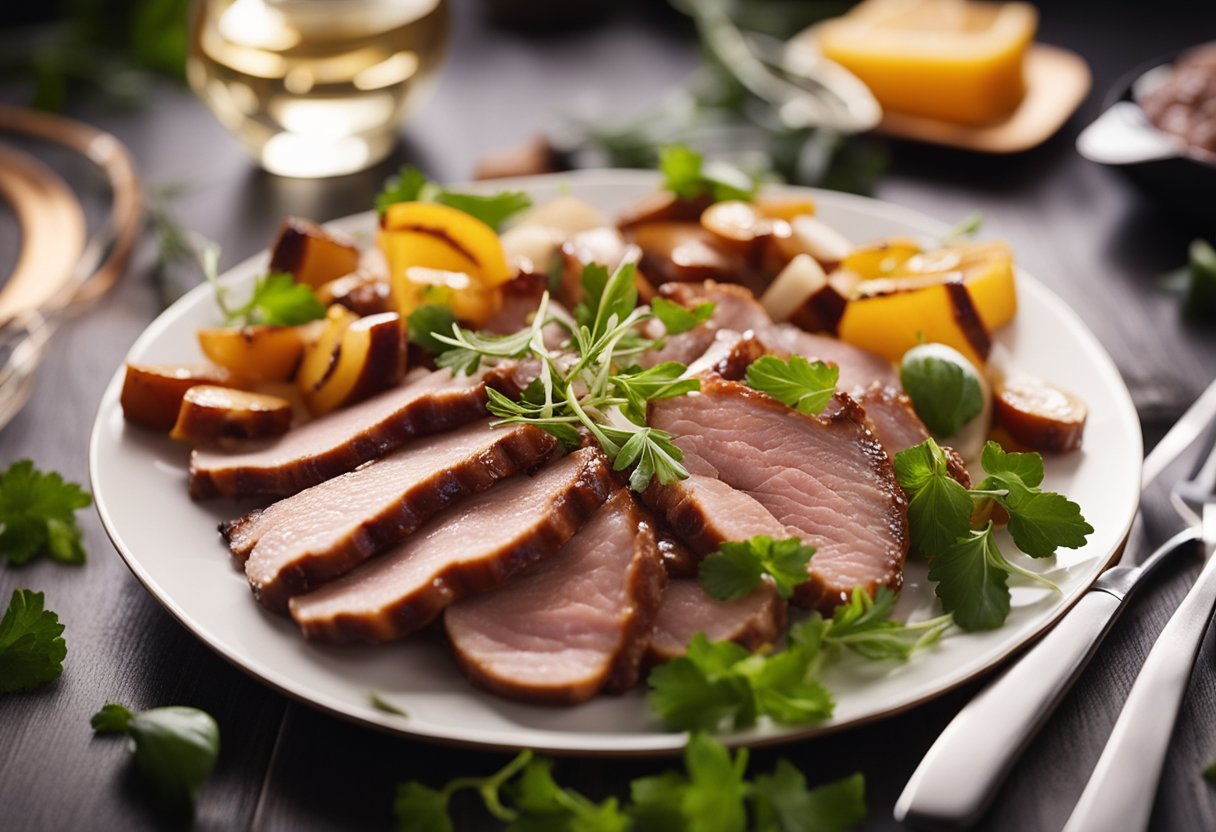
Veal has a mild flavor and is known for its tenderness. It is often described as having a subtle sweetness and a delicate texture.
Some people compare its taste to chicken or pork, but with a slightly more delicate flavor. However, the taste of veal can vary depending on the cut and how it is cooked.
In this article, we will explore the different aspects of veal taste and texture, as well as how it compares to other meats.
Key Takeaways
- Veal has a mild and subtle flavor with a delicate texture.
- Its taste can vary depending on the cut and cooking method.
- Veal is often compared to chicken or pork, but with a slightly more delicate flavor.
Understanding Veal
Veal is a type of meat that comes from young calves, typically male, that are underdeveloped and have not yet been weaned off of their mother’s milk.
The meat is known for its tenderness and mild flavor, making it a popular choice for dishes that require a delicate touch.
One of the key differences between veal and beef is the age of the animal at the time of slaughter.
Veal comes from calves that are typically between 2-6 months old, while beef comes from cattle that are at least 1 year old.
This difference in age has a significant impact on the taste and texture of the meat.
Another important factor that affects the taste of veal is the diet of the animal. Milk-fed veal, for example, is known for its pale color and delicate flavor, while calves that are fed a diet of grain and hay may have a slightly stronger taste.
When it comes to cooking with veal, it’s important to keep in mind that the meat is quite delicate and can easily become tough if overcooked.
It’s typically best to cook veal using gentle methods such as braising or roasting, and to avoid high-heat cooking methods like grilling or frying.
Overall, veal is a delicious and versatile meat that can add a unique flavor and texture to a wide range of dishes.
Whether you’re looking to make a classic veal scallopini or a more modern veal ragu, understanding the unique qualities of this meat is key to achieving the best possible results.
Veal Taste Profile
Veal has a distinct taste that sets it apart from other meats. The flavor is often described as mild and delicate, with a subtle sweetness that is not overpowering.
It has a tender texture that melts in your mouth, making it a popular choice for many culinary dishes.
When compared to beef, veal has a milder taste and a more delicate flavor. It is not as robust as beef, which makes it a great choice for those who prefer a lighter taste in their meat.
The subtle taste of veal allows it to pair well with a variety of spices and herbs, making it a versatile ingredient in many recipes.
One of the reasons why veal has a mild flavor is because it comes from a young calf. The meat is leaner than beef, which means it has a lower fat content.
This lack of fat contributes to the delicate flavor of veal, as well as its tender texture.
Some people describe the taste of veal as sweet, which is not surprising given its young age and lean nature.
However, it is important to note that the sweetness is subtle and not overwhelming. Veal is not a sugary meat, but rather a mild and delicate one.
In summary, veal has a mild and delicate flavor with a subtle sweetness. It is not as robust as beef, but its subtle taste makes it a versatile ingredient in many recipes.
The tender texture of veal is also a standout feature, making it a popular choice for many culinary dishes.
Veal Texture
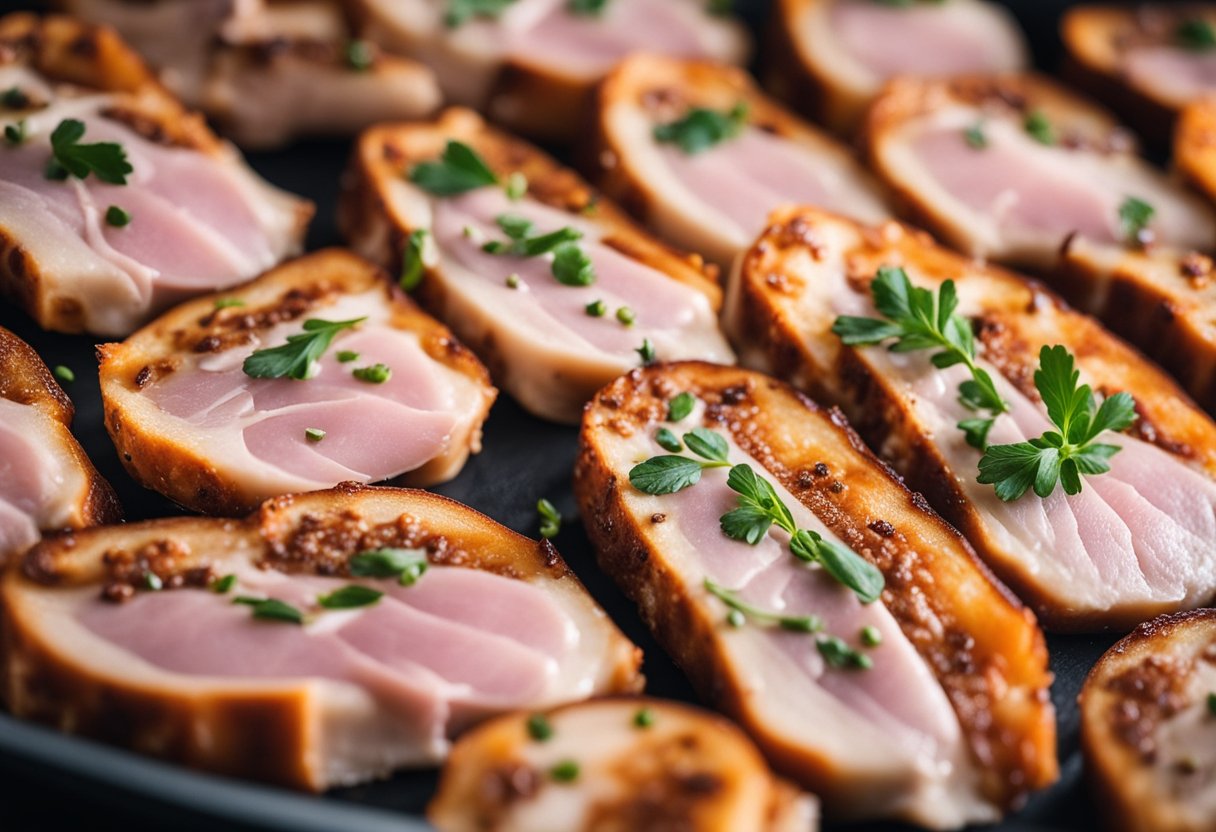
Veal has a unique texture that sets it apart from other types of meat. It is known for its tenderness, softness, and velvety texture. The meat is fine-grained and has a tender texture that melts in your mouth.
The texture of veal is one of the reasons why it is a popular choice for dishes that require a delicate flavor and texture. It is also a great option for those who prefer a milder taste and a more tender texture.
When cooked correctly, veal can be very tender and juicy. The meat has a velvety texture that is smooth and fine-grained.
This texture is due to the fact that veal comes from young calves that have not yet developed tough muscle fibers.
Veal is also known for its tender texture. It is easy to chew and does not require a lot of effort to eat. This makes it a great option for those who have difficulty chewing tougher meats.
In summary, the texture of veal is tender, soft, and velvety. It is fine-grained and has a tender texture that melts in your mouth.
When cooked correctly, veal can be very tender and juicy, making it a popular choice for dishes that require a delicate flavor and texture.
Comparison with Other Meats
As someone who enjoys different types of meat, I find it helpful to compare veal with other meats to understand its unique taste. Here’s how veal compares to other popular meats:
- Beef: Veal is often compared to beef since both meats come from the same animal. However, veal is much more tender and has a milder flavor than beef. Beef has a stronger taste and a darker color than veal. Additionally, beef is typically more expensive than veal.
- Chicken: Veal tastes like chicken in terms of its mild flavor. However, veal has a softer texture than chicken and is often served with a light sauce or butter.
- Pork: While pork has a stronger taste than veal, both meats are similar in terms of tenderness. Pork is also often cooked with a variety of spices and sauces, while veal is typically served with a lighter sauce or seasoning.
- Lamb: Lamb has a distinct flavor that is often described as gamey or earthy, while veal has a much milder taste. Additionally, lamb is typically more expensive than veal.
- Meat: When compared to other types of meat, veal has a very mild flavor and is often served with a light sauce or seasoning. Its tenderness makes it a popular choice for dishes such as veal scallopini or veal piccata.
Overall, veal is a great option for those who prefer a milder taste in their meat. Its tenderness and delicate flavor make it a versatile ingredient in a variety of dishes.
Types of Veal
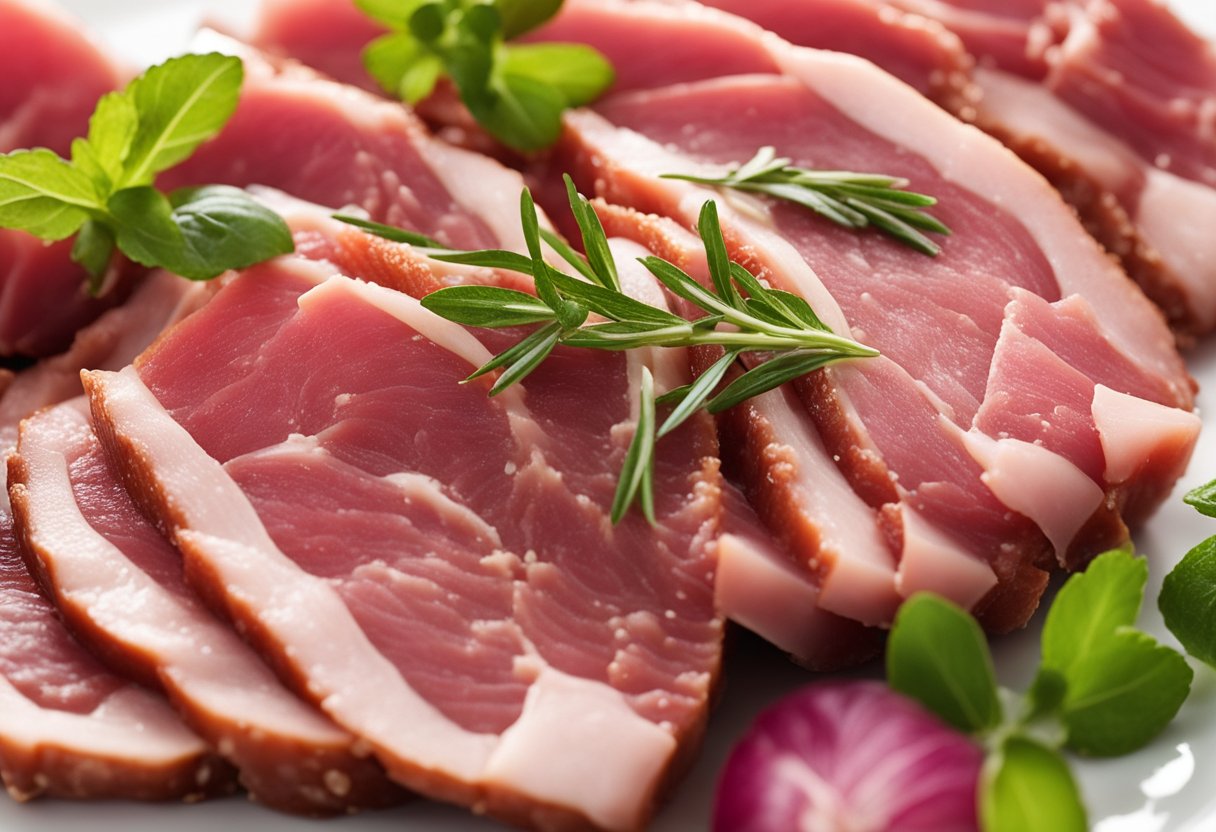
Veal is a meat that comes from young calves, and there are several different types of veal available. Each type of veal has its own unique characteristics and flavor profile.
Bob Veal
Bob veal is the meat from a calf that is less than three weeks old. This type of veal is very tender and has a light pink color.
Bob veal is often used in dishes that require a mild flavor, such as veal piccata or veal scallopini.
Rose Veal
Rose veal comes from calves that are between three and five months old. This type of veal has a slightly darker color than bob veal and is more flavorful.
Rose veal is often used in dishes that require a stronger flavor, such as veal stew or osso buco.
Red Veal
Red veal comes from calves that are between five and seven months old. This type of veal has a darker color and a stronger flavor than rose veal.
Red veal is often used in dishes that require a bold flavor, such as veal chops or veal roast.
Overall, the type of veal you choose will depend on your personal taste preferences and the dish you are preparing.
It’s important to note that some people have ethical concerns about consuming veal, so it’s always a good idea to do your research and make an informed decision before purchasing any type of veal.
Veal in Different Cuisines
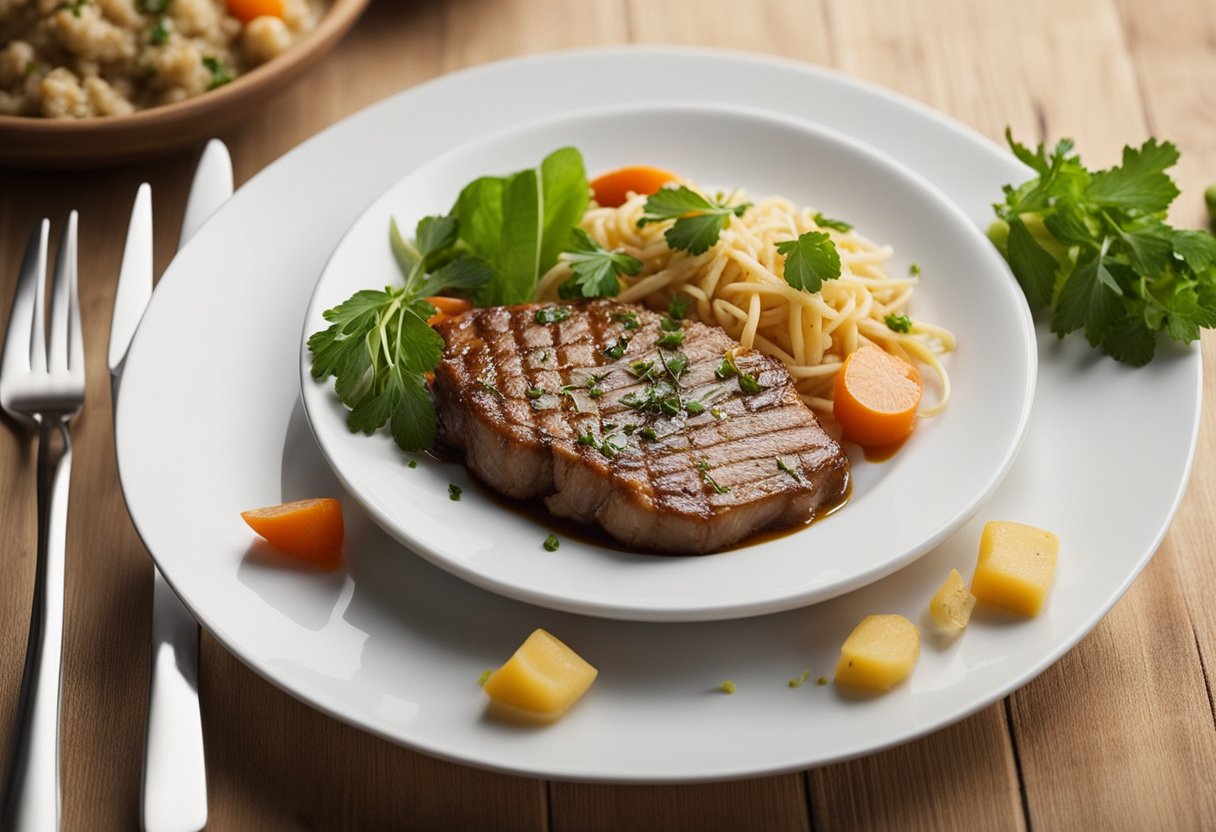
Veal is a popular meat in many cuisines around the world. It is commonly used in Italian, French, and Mediterranean dishes, among others.
Each cuisine has its own unique way of preparing and cooking veal, resulting in a variety of flavors and textures.
In Italian cuisine, veal is often used in dishes such as Veal Marsala, Veal Scallopini, and Veal Piccata. Veal Marsala is a dish made with veal cutlets, mushrooms, and Marsala wine sauce. Veal Scallopini is a dish made with thinly sliced veal cutlets, lemon, and capers.
Veal Piccata is a dish made with veal cutlets, lemon, and butter sauce. These dishes are often served with pasta or risotto.
In French cuisine, veal is a common ingredient in dishes such as Blanquette de Veau, Veal Escalopes, and Veal Sweetbreads.
Blanquette de Veau is a classic French stew made with veal, vegetables, and a creamy sauce. Veal Escalopes are thin slices of veal that are breaded and sautéed.
Veal Sweetbreads are a delicacy made from the thymus gland of a young calf. These dishes are often served with potatoes or vegetables.
In Mediterranean cuisine, veal is often used in dishes such as Vitello Tonnato, Veal Kebabs, and Veal Stews. Vitello Tonnato is a dish made with thinly sliced veal, tuna sauce, and capers.
Veal Kebabs are skewers of marinated veal, grilled to perfection. Veal Stews are hearty dishes made with veal, vegetables, and spices. These dishes are often served with rice or bread.
Overall, veal is a versatile meat that can be prepared in a variety of ways, depending on the cuisine and the chef’s preferences.
Whether you prefer Italian, French, or Mediterranean cuisine, there is a veal dish that is sure to satisfy your taste buds.
Cooking Veal
When it comes to cooking veal, there are many different methods you can use depending on the cut of meat and your personal preferences. Some of the most popular ways to cook veal include roasting, braising, and poaching.
One of the easiest ways to cook veal is by roasting it in the oven. To do this, you will want to preheat your oven to 350°F and season your veal with salt and pepper.
Then, place the veal on a roasting pan and cook it in the oven until it reaches an internal temperature of 145°F for medium-rare or 160°F for medium, according to the USDA.
Another popular way to cook veal is by braising it. Braising involves cooking the meat slowly in a liquid, such as wine or broth, until it is tender and flavorful.
To braise veal, start by browning the meat in a pan and then adding your liquid and any additional seasonings.
Cover the pan and simmer the meat until it is cooked through, which can take anywhere from 1-3 hours depending on the cut of meat.
If you prefer a lighter, more delicate flavor, you might want to try poaching your veal. To poach veal, simmer it in a flavorful liquid, such as chicken broth or white wine, until it is cooked through.
This method is especially good for veal cutlets or other thin cuts of meat that can quickly become tough if overcooked.
No matter which cooking method you choose, it is important to always check the internal temperature of your veal to ensure it is cooked to a safe temperature.
This not only ensures the meat is safe to eat, but also helps to prevent overcooking and drying out the meat.
Veal Cuts
When it comes to cooking veal, it’s important to know the different cuts available. Each cut has its own unique texture and flavor, so choosing the right one for your recipe is essential.
Here’s a breakdown of some of the most common veal cuts:
Chops
Veal chops are a popular cut that comes from the loin or rib of the calf. They are bone-in cuts that are tender and flavorful. Veal chops are perfect for grilling, broiling, or pan-frying.
Rib
Veal rib is a flavorful and tender cut that comes from the rib cage of the calf. It’s a bone-in cut that’s perfect for roasting or grilling. Veal rib is also great for stews and braises.
Leg
Veal leg is a lean and flavorful cut that comes from the hindquarters of the calf. It’s a versatile cut that can be roasted, grilled, or braised. Veal leg is also great for stews and soups.
Steak
Veal steak is a tender and flavorful cut that comes from the leg or loin of the calf. It’s a boneless cut that’s perfect for grilling, broiling, or pan-frying. Veal steak is also great for stir-fries and stews.
Cutlet
Veal cutlet is a thin and tender cut that comes from the leg or loin of the calf. It’s a boneless cut that’s perfect for pan-frying or breading and frying. Veal cutlet is also great for schnitzel and sandwiches.
Loin
Veal loin is a tender and flavorful cut that comes from the back of the calf. It’s a boneless cut that’s perfect for roasting, grilling, or pan-frying. Veal loin is also great for stews and braises.
Roasts
Veal roasts are large cuts that come from various parts of the calf. They are perfect for roasting and can be seasoned and flavored in a variety of ways. Veal roasts are great for special occasions and family gatherings.
Ground Meat
Veal ground meat is a lean and flavorful option that can be used in a variety of recipes. It’s perfect for meatballs, meatloaf, burgers, and more. Veal ground meat is also great for sauces and stews.
In conclusion, knowing the different veal cuts is essential for cooking delicious and flavorful meals. Whether you’re looking for a tender cut for grilling or a flavorful cut for stewing, there’s a veal cut that’s perfect for your recipe.
Seasoning and Pairing Veal
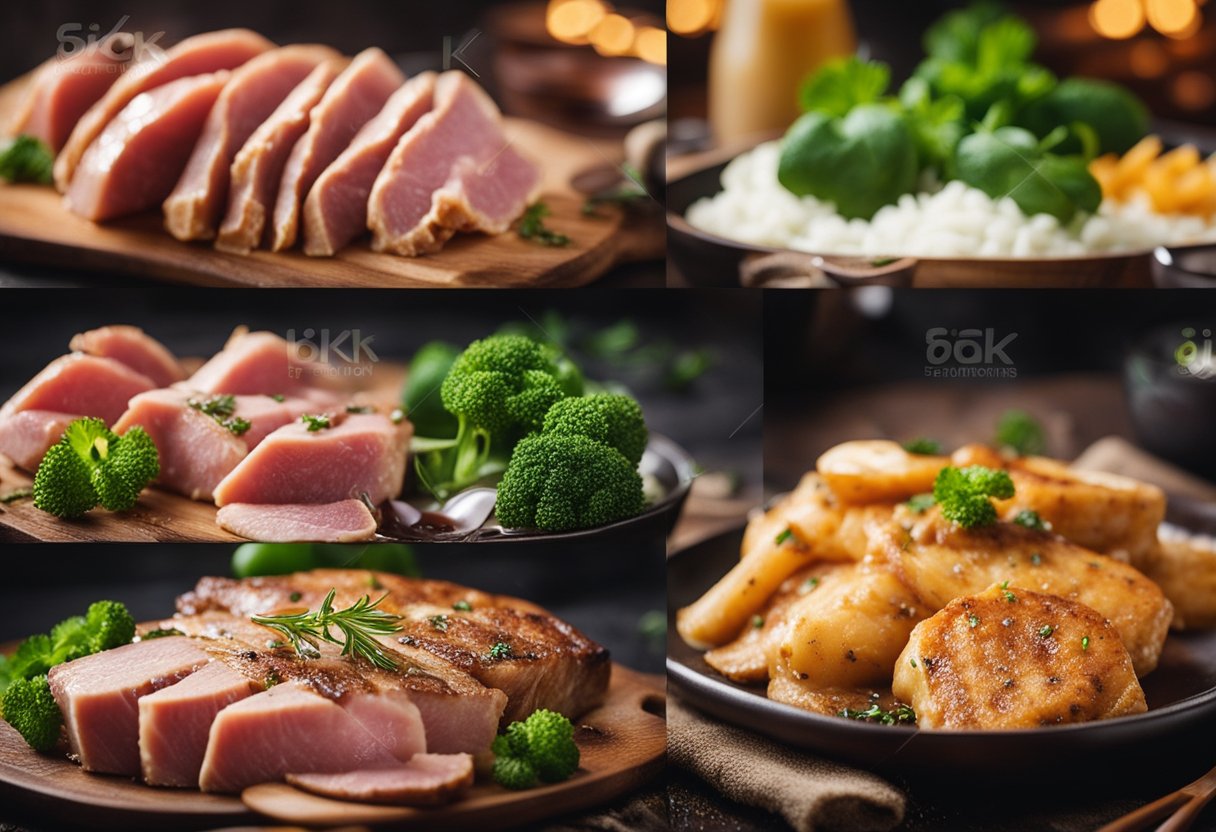
When it comes to seasoning and pairing veal, there are a variety of options to choose from.
The flavor of veal is often described as delicate and mild, which means it can easily take on the flavors of the seasonings and ingredients it is cooked with.
One popular seasoning for veal is rosemary. This herb has a slightly piney flavor that pairs well with the mild taste of veal. Other herbs that work well with veal include thyme and sage.
These herbs can be used fresh or dried, and are often added to veal dishes in combination with garlic.
Speaking of garlic, it is another popular seasoning for veal. Garlic has a strong flavor that can add depth to the mild taste of veal. It can be used in many different forms, including fresh, roasted, or minced.
Salt and pepper are also staples when it comes to seasoning veal. These basic seasonings can help bring out the natural flavors of the meat.
When using salt, it’s important to remember that veal is a delicate meat and can easily become over-salted, so it’s best to use a light hand.
When it comes to pairing veal with other ingredients, there are many options to choose from. White wine is a popular choice for deglazing the pan when cooking veal.
It can add a subtle sweetness to the dish and help to balance out the flavors of the seasonings.
Veal also pairs well with grains such as rice or quinoa. These grains can be cooked in broth or flavored with herbs and spices to complement the flavor of the veal.
Another option is to serve veal with roasted or sautéed vegetables, such as mushrooms or asparagus.
In conclusion, when it comes to seasoning and pairing veal, there are many options to choose from. Whether you prefer herbs, garlic, or simple salt and pepper, the key is to use seasonings that complement the delicate flavor of the meat.
Experiment with different ingredients and flavors to find the perfect pairing for your next veal dish.
Nutritional Value of Veal
Veal is a nutrient-dense meat that is low in fat and cholesterol. It is a rich source of protein, vitamins, and minerals that are essential for maintaining a healthy body. Here are some of the key nutritional benefits of veal:
Protein
Veal is an excellent source of protein, which is essential for building and repairing tissues in the body. A 3-ounce serving of veal contains approximately 24.6 grams of protein, which is almost half of the daily recommended intake for an adult.
Vitamins
Veal is rich in vitamins B12, B6, and niacin. These vitamins play a crucial role in maintaining healthy nerve function, producing red blood cells, and converting food into energy.
A 3-ounce serving of veal provides approximately 27% of the daily recommended intake of vitamin B12.
Minerals
Veal is a good source of minerals such as iron, zinc, and selenium. Iron is essential for producing red blood cells, while zinc and selenium play a crucial role in maintaining a healthy immune system.
A 3-ounce serving of veal contains approximately 1.8 milligrams of iron, which is about 10% of the daily recommended intake for an adult.
Low in Fat
Veal is a lean meat that is low in saturated fat and cholesterol. A 3-ounce serving of veal contains approximately 2.5 grams of fat, which is significantly less than other meats such as beef or pork.
Health Benefits
The nutritional benefits of veal extend beyond its high protein and nutrient content. Veal is also rich in phosphorus, a mineral that is essential for maintaining healthy bones and teeth.
Additionally, the low-fat content of veal makes it an excellent choice for people who are trying to maintain a healthy weight or reduce their risk of heart disease.
In conclusion, veal is a nutrient-dense meat that is an excellent source of protein, vitamins, and minerals.
Its low-fat content and high nutrient density make it an excellent choice for people who are looking to maintain a healthy body weight and reduce their risk of heart disease.
Veal and the Environment
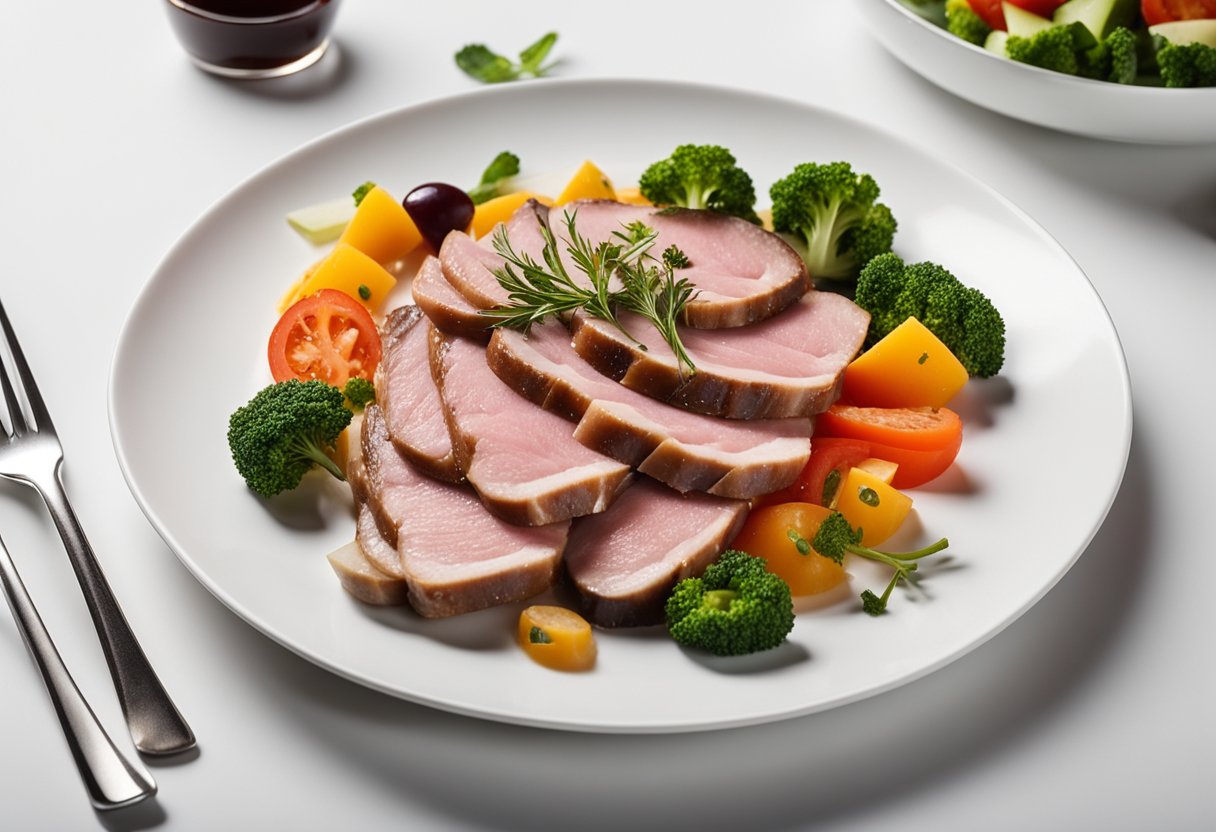
As someone who is concerned about the environment, I always try to make choices that are sustainable and eco-friendly. When it comes to veal, there are some environmental considerations to keep in mind.
One of the main environmental concerns with veal production is the amount of resources required to raise the calves.
Because veal calves are typically raised indoors, they require a significant amount of energy to maintain a comfortable temperature and provide adequate ventilation.
Additionally, veal producers often use large amounts of antibiotics and other medications to keep the calves healthy, which can have negative environmental impacts.
However, it’s worth noting that not all veal production is created equal. Some producers are taking steps to reduce their environmental impact by using more sustainable farming practices.
For example, some veal producers are using grass-fed calves, which can help to reduce the amount of energy required to raise the animals.
Grass-fed veal also tends to be more nutritious, as it contains higher levels of omega-3 fatty acids and other beneficial nutrients.
Another way that veal producers are working to reduce their environmental impact is by using more efficient production methods.
For example, some producers are using automated feeding systems that can help to reduce waste and improve efficiency.
Additionally, some producers are using renewable energy sources like solar or wind power to help power their operations.
Overall, while there are certainly environmental concerns associated with veal production, it’s important to remember that not all veal is created equal.
By choosing grass-fed veal from sustainable producers, you can enjoy this delicious meat while also doing your part to protect the environment.
Personal Preference and Veal
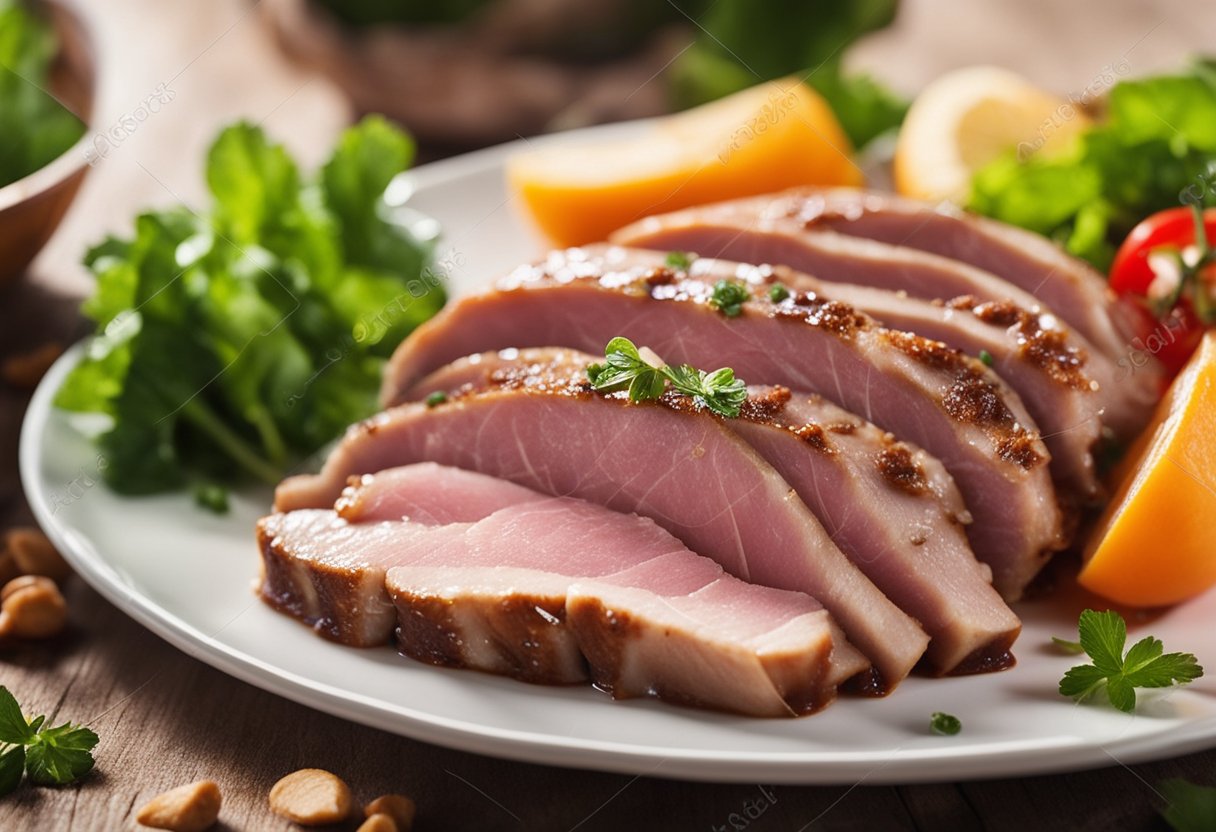
When it comes to taste, personal preference plays a significant role in whether someone enjoys veal or not. Some people find veal to be a unique and delicious meat, while others may not enjoy its flavor as much.
In my opinion, veal is a good choice for those who prefer a milder flavor in their meat.
Its taste is often described as smoother, lighter, and more delicate than beef. This makes it a great option for those who are not fans of strong-tasting meats.
However, it’s important to note that veal can be quite expensive compared to other types of meat. This may be a factor in someone’s decision to choose veal or not.
It’s also worth mentioning that the way veal is prepared can greatly affect its taste.
Overall, whether or not someone enjoys the taste of veal is highly subjective and dependent on personal preference. It’s important to try it for yourself and decide if it’s a meat you enjoy or not.
Frequently Asked Questions
What is the difference between the taste of veal and beef?
Veal is known for its mild and delicate flavor, while beef has a stronger and more intense taste. This is because veal comes from young calves, so the meat is more tender and has a less developed flavor.
On the other hand, beef comes from mature cows, so the meat is tougher and has a richer taste.
Is veal meat tasty?
Veal meat is definitely tasty, but it has a more subtle flavor than beef. Some people describe it as having a slightly sweet taste, while others compare it to chicken.
It is important to note that the taste of veal can vary depending on the cut of meat and how it is cooked.
How does the taste of veal compare to steak?
Veal and steak are two different types of meat, so their taste cannot be directly compared. However, both meats can be cooked in similar ways and have a similar texture.
Veal has a milder flavor than steak, but it is still a delicious and versatile meat.
Does veal taste better than beef?
Veal and beef have different tastes, so it is difficult to say which one tastes better. Some people prefer the delicate flavor of veal, while others enjoy the rich taste of beef.
It ultimately comes down to personal preference and the dish being prepared.
Is veal meat chewy?
Veal meat is not typically chewy, as it comes from young calves and is more tender than beef.
However, some cuts of veal may be tougher than others, so it is important to choose the right cut and cook it properly to ensure it is not chewy.
How do you cook veal?
Veal can be cooked in a variety of ways, including grilling, roasting, sautéing, and braising. It is important to choose the right cooking method based on the cut of meat and the desired outcome.
Veal should be cooked to an internal temperature of 145°F to ensure it is safe to eat.







